Hello hello!
Welcome back to Summer Skin School! Today I’m delighted to present the final volume of the SPF Club Handbook. This handbook is categorized by Big Ideas about sunscreen. Understanding these Big Ideas will help all the little-r ideas make sense.
Some paid subscribers got a sneak peek of today’s post during our live virtual event on Tuesday. In addition to everyone going home with free sunscreen, they also got a preview of my comprehensive list of recommendations and got to share their own sunscreen superlatives. You will all be getting this list on SUNDAY, when I’ll also be opening up Office Hours to all for personalized sunscreen recommendations. I hope to see you there!
Today’s Big Idea is The Dose! Here’s what we’re covering:
SPF CLUB HANDBOOK TABLE OF CONTENTS
The Dose: Using & Applying Sunscreen
How Sunscreen is Tested & The “Dose”
Limitations of Sunscreen Testing
Using Sunscreen the Right Way
How Much to Use
Makeup with SPF
Blue Light & Iron Oxides
In Your Routine
Applying Sunscreen
Who & When
Who Needs to Reapply?
The UV Index
High Protection SPF
Kids & Babies
Reapplying Sunscreen
Tips & Tricks
Sticks, Sprays & Powders
UPF Clothing
BIG IDEA: THE DOSE
Understanding this big idea will help you understand how much sunscreen to use, what your sunscreen options are and how to think about your risk when deciding to apply/reapply.
How Sunscreen is Tested & The “Dose”
The biggest user error with sunscreen is not using the proper amount. It’s easiest to understand this if you think about sunscreen like any other drug, which all have specific doses. If you don’t take the proper dose of a medication, you won’t get the intended results. Taking 1 Advil is different from taking 3. If you split a 100mg pill in half, you’re only getting 50mg. It’s the same exact thing with sunscreen: if you don’t use the proper amount of sunscreen, you will not get the protection on the bottle. Using a tiny bit of SPF 50 is not giving you SPF 50 protection.
Despite differences in approved ingredients, the dose used for sunscreen products during testing is consistent around the world. This consistency is important because it means you can pick up a sunscreen product anywhere in the world and not need to question how much to use.
SPF testing is conducted on human volunteers in a lab. The sunscreen is applied at 2mg/cm² of skin, which is the actual scientific dose of sunscreen. Then, using a UV lamp, the lab looks at how much time is required for skin redness to appear, compared to an area without any sunscreen. This is then fed into a standard formula to calculate the SPF value. The main takeaway here is that there is a specific amount of product you need to use in order to get the protection on the bottle.
Limitations of Sunscreen Testing
I debated including a section about this because the very last thing I want to do is cause anyone any hesitation about using sunscreen. But at the same time, my goal is to make you understand why sunscreen is important and eliminate any confusion about using it. So, in this case, it means pointing out some issues with the way sunscreen is tested, because this topic is another one that gets sensationalized and misinterpreted in the news and the best way to combat misinformation is to walk you through it factually.
Thinking back to last week’s section about how studies not done on humans cannot accurately represent what happens on human skin, it seems reassuring to know that sunscreen testing is done on actual human skin (in-vivo testing).
ISO 2444 is considered the gold standard testing methodology for sunscreen. ISO stands for International Organization for Standardization. Around the world, there are ISO-certified labs that conduct SPF testing with this method and follow the specific rules such as the skin tones tested, how much product is applied, how it is applied (in circular motions, then up and down and side to side, wearing gloves that do not leave the skin while doing this motion etc.) and even the colors of the walls in the room (which can affect how the color is perceived).
However, even with these rules, the method still has flaws that can cause variability in testing and is why every summer, we see headlines about labs that tested sunscreen and found wildly different SPF values than those on the bottle. Labmuffin compares this to how you can only zoom into a photo so much before it gets blurry.
For starters, the tests are conducted on a small sample size of 10-20 people who are exposed to a UV lamp. Beyond the issues of intentionally burning skin for science, the calibration of the UV lamp can differ. Having strict protocols for how to apply the sunscreen is great, but it’s still done by a human, so streaking, air bubbles, varying finger pressure are all possibilities. Another opportunity for variation in results is from the human assessor who assesses the level of redness. These people do need to pass vision tests that assess how they differentiate color, but it’s still a human! Other potential issues arise with how the sunscreen is stored, decanted, left to dry on the skin etc. This is paraphrasing a great video from Mo’s Skin Lab, who works in EU regulatory toxicology.
For all of these reasons, it’s understandable that labs around the world may get different results. It’s worth noting that these are not new issues, and labs and government agencies have been well aware for decades, yet the recommendation is still to wear sunscreen. To combat this, many reputable brands pay for testing in more than one lab. Last year, two new ISO testing methods were approved that result in less variability, but they haven’t been widely adopted yet.
If this all freaks you out, I get it and I encourage you to read Lab Muffin’s full breakdown here. The biggest thing I want you to remember though, is that regardless of these issues, we can still trust sunscreen. ISO 2444 is the best option we have for now and we have plenty of evidence proving that sunscreen works. If nothing else, we know it is capable of working because otherwise we’d all be wrinkly, burned to a crisp and getting more skin cancer diagnoses. Even with the issues in testing, the biggest issue with sunscreen is user error by applying too little product. So let’s focus on that.
USING SUNSCREEN THE RIGHT WAY
How Much to Use
In order to get the protection on the label, you need to apply 2mg per centimeter of skin (2 mg/cm²). While there is a way to actually calculate this for yourself, no one expects consumers to do this (when the goal is to get people to wear sunscreen in the first place, it needs to be easy!) Instead, the recommendation uses an average approximation: ¼ tsp for your face or ½ tsp for your face, neck and ears. What I always recommend is to grab a quarter teaspoon and see how many squeezes/pumps it takes to fill so you know how many moving forward.
Sometimes you hear “2 or 3 finger-lengths” which is better than nothing, but as you can see in the below picture, the amount that comes out of the bottle can really change the finger-length. If you’re using this method, scrape the sunscreen into a ¼ teaspoon so you actually know how many finger-lengths you need.
For the body there are various recommendations, but generally about 1 teaspoon for each limb, front torso and back–that’s 6 teaspoons or a full shot glass for your entire body.
Your initial sunscreen application in the morning (or early afternoon or whenever, idk your schedule) should always be with an actual sunscreen lotion/cream/gel product, which is the best option for full and even coverage.
Makeup with SPF
Anything that has an SPF value has been tested the same way, which means in order to get the SPF 50 protection labeled on your makeup, you’d need to use ¼ teaspoon. That is a lot more foundation/blush/bronzer/tinted moisturizer etc. than anyone is using and is why you always hear people say that you can’t just rely on the SPF in your makeup as your sun protection.
If you are actually wearing ¼ teaspoon of your makeup with SPF, then by all means proceed. Otherwise, for most people, SPF makeup is best used as secondary protection or bonus protection. Treat it like makeup, applied after your regular sunscreen sets.
If you’re layering a tinted mineral sunscreen over a chemical sunscreen (like I do in the summer!) check out this guidance about coated vs. uncoated zinc.
Blue Light & Iron Oxides
Using tinted products (with or without SPF) can actually offer another sun protection benefit. For more information about blue light, read this section in Volume 1.
Iron oxides are the colored pigments used to make color cosmetics, like foundation, tinted moisturizer and tinted sunscreen. The 3 iron oxides (red, yellow and black) are used in different ratios to match skin tones. So if you have darker skin and/or are prone to pigmentation (like melasma), using a tinted product, especially in the summer, can help mitigate HEV damage. You can use a tinted sunscreen (as primary or secondary protection, depending on how much you use) or just your foundation/concealer, which also have iron oxides.
A few months ago I attended an event by Colorescience and learned all about their use of iron oxides.



In Your Routine
Sunscreen should be the very last step in your skincare routine, applied on top of your serums and moisturizer. You can apply makeup on top of sunscreen after you let it set.
While the filters start to work immediately, sunscreen needs time to dry down and form an even film on your skin. Otherwise, it may get disturbed or wiped off and the protection will be patchy. The recommendation is to wait 15 minutes after applying to let it set, before going outside or applying makeup. (But one study did find that 8 minutes is sufficient.)
Never mix anything into your sunscreen (makeup, skincare products, other sunscreen) because that will compromise the formula and your protection. The only exception to that rule is if a brand has explicitly done the testing to confirm that mixing their products doesn’t impact efficacy–this is particularly helpful with tinted products, so you can customize the color. To clarify, this means it’s okay to mix products within the brand, not that you can mix them with any other products. Naturium’s Dew Glow, all Colorescience sunscreen and Ultra Violette’s Daydream (not available in the US) have done this testing.
You should never transfer your sunscreen into different containers because the packaging is specifically designed to maintain stability! Similarly, don’t leave your sunscreen in a hot car, because that can cause potential degradation. (If you need an insulation solution, I love this sun cooler.)
On the topic of stability, you really need to be mindful of sunscreen expiration dates. Unopened, stored in a cool, dark place, most sunscreens have a shelf life of 1-2 years. But once it’s opened, follow the PAO on the bottle or assume 12 months after opening. Expired sunscreen isn’t worth the risk and you’ll only find out after you’ve been burned!
APPLYING SUNSCREEN
Who and When
The thing most people care about: who needs to apply sunscreen and when does it need to be applied?
UV exposure varies based on the time of day and the season. Peak sun hours, during midday, roughly 10am-2pm is the most important time to be protected and limiting exposure. In the summer, the sun is at a more direct angle so there is significantly more UV radiation compared to the winter. Remember that UVA levels have less fluctuation throughout the year and can penetrate through windows, glass, rain & clouds, so you should always be applying at least once in the morning.
In addition to the time of day and season, there are other geographic considerations. UV exposure is higher the closer you are the equator. There is also more exposure at high altitudes because there is less atmospheric absorption of UV rays. Finally, snow, sand and water can reflect UV rays, increasing your exposure, so it’s extra important to adequately protect yourself when skiing or at the beach.
We know that UV exposure can cause burning, premature aging, pigmentation, exacerbation of acne/rosacea/other skin disorders and increased skin cancer risk. Most of these risks exist for everyone, regardless of skin tone, but burning and skin cancer risk does vary based on skin tone. Higher risk individuals across all skin tones include those with a personal or family history of skin cancer, those taking immunosuppressive medications or people with lots of moles. Additionally, using chemical exfoliants increases sun sensitivity for all skin tones.
The biggest risk of skin cancer exists for those with light skin that burns easily (Fitzpatrick 1-2), followed by white/olive/light brown skin (Fitzpatrick 3-4). Deep and dark skin that rarely or never burns (Fitzpatrick 5-6) have the lowest risk of sun-induced skin cancer (but it’s not 0).
But in terms of skin tone, elasticity, radiance, smoothness, reduced inflammation (basically everything in terms of how your skin looks and feels) sun protection is the number one most important product for everyone to use, across all skin types, tones and ages. Additionally, nonwhite skin is more prone to pigmentation issues, so it’s extra important for these populations to protect themselves from UVA and use products with iron oxides.
Protection wise, for daily use, a minimum of SPF 30 broad-spectrum is generally recommended for mild to moderate sun exposure (like commuting or running errands) and for those with medium to darker skin tones. SPF 50 broad-spectrum is recommended if you will have more significant sun exposure, are at higher altitudes, have fair to light skin, sensitive skin, are prone to pigmentation, have acne/rosacea/other inflammatory skin disorder or have a history/increased risk of skin cancer.
Who Needs to Reapply?
The goal with sunscreen is an even layer of protection. Sunscreen breaks down over time and from things like water, sweat, oil, touching your face, wiping your face, which disrupt the film and that even layer. Because of this, the general recommendation is to reapply every 2 hours or after swimming/sweating—this isn’t an exact science and some sunscreens are able to last much longer, but 2 hours is the general rule to follow and how most testing has been conducted. That being said, there is some variation in reapplication guidance.
If you are spending a decent amount of time outdoors, especially between the hours of 10am-2pm, you should reapply every 2 hours or before going outside. If you are only outside for a short period of time (i.e. commuting, running a quick errand), especially outside of those peak exposure times, it may not be as necessary. However, remember that sun damage is cumulative and that certain people are more susceptible to sun damage, so a little bit of exposure here and there can add up.
If you are inside most of the day, you probably don’t need to reapply unless you are sitting next to a window. (This famous example of a truck driver shows you everything you need to know.)
The best way to assess your own risk and sunscreen needs (in terms of when to apply and/or reapply) is to think about the factors above and use the UV Index.
The UV Index
The UV Index measures the intensity of UV radiation at any given time, calculated from things like latitude, altitude, time of day, ground conditions, cloud cover & more. You can find the UV Index on your weather app. It’s a whole number on a scale of 0-11+. 0 means no sunlight and is only at night. Here’s a great guide from the EPA.
For most people, the guidance is to wear sunscreen if the UV Index is above 2. But if you have fair skin, sensitive skin or burn easily (or are just really concerned about cumulative UV damage), then at least apply once in the morning if it is 1-2. The higher the UV Index, the more additional sun protection measures you should take (UPF clothing, shade, avoiding midday exposure). Reapplication guidelines are discussed in the next section.
Also, if you have trouble remembering to apply sunscreen or it’s not already ingrained in your daily routine, my biggest advice is to not listen to any of these rules and just always apply. The more excuses you make for yourself, the harder it will be to form a habit and the less sunscreen you will wind up wearing.
High Protection SPF
While the vast majority of sunscreens have the same guidelines for reapplication and water resistance, there are two European brands that specialize in their own high protection technologies that are able to provide 6-10 hours of protection or 4 hours of water resistance. These brands are EVY Technology (Sweden) and Riemann P20 (Denmark). The formulas are distributed throughout the top layer of skin, unlike most sunscreen products that sit on the surface, which is how it’s able to have extended protection. Make sure to read the full application instructions as they are slightly different from a regular sunscreen and it’s best to layer very little, if anything, underneath, so that you don’t block the sunscreen from penetrating.
Evy Technology products are in a mousse format, like shaving cream. However, the brand still advises to reapply every 2 hours or so if you have been swimming, sweating or drying off with a towel, as those things can remove layers of the sunscreen and reduce protection levels. In regards to their testing protocols, they test their formulas in 3 separate ISO-certified labs.
Here’s what they say about water and sweat resistance:
EVY sunscreens are extra water-resistant. This means after a standard test of 80 minutes in water (140 minutes), at least 50% of the SPF has been maintained. EVY sun protection goes far beyond this level. A 2-person test was performed with EVY SPF 50 Kids in a laboratory where the test subjects were in water for 20 minutes and then spent 15 minutes drying between each round of water exposure, repeated over 8 hours. The SPF value was then measured again. EVY SPF 50 Kids’ level of protection had only been reduced to SPF 35.
Riemann P20 is a lotion formula, but I’d treat it with the same considerations as above. Here’s an in-depth Reddit review.
They’re both a bit of a pain to get, but you can get EVY Products here and Riemann P20 here. I personally love the Riemann Kids or EVY Kids for body and this or this for face. I use these products for things like beach days, outdoor activities or concerts. You can use them daily, but they are expensive, a bit more laborious to apply, thick-ish (though absorb nicely) and limit what skincare you can use underneath, but you can apply makeup on top. They’re great options for kids because it minimizes the stress of reapplying. Speaking of kids…
Kids & Babies
Approximately 25% of the total sun damage in your lifetime occurs by age 18, with about 10% more accruing each decade. Getting sunburned in childhood can double your odds of developing melanoma. 5 or more blistering sunburns between ages 15-20 increases one’s melanoma risk by 80% and non-melanoma skin cancer risk by 68%. TL;DR it’s really important for kids to wear sunscreen! Plus, it sets them up for good sun safety habits. UPF clothing is honestly the easiest option, but if your kid doesn’t hate it, apply that sunscreen.
Here’s a post I wrote last year about sunscreen and babies, with tons of recs & tips, all of which can be applied to kids as well. But I do want to share this brilliant tip from a follower:
HOT TIP for application — a self-tanning mitt! I started out using it on my two-year-old, who hates the texture of any lotion and wriggles like a fish, the mitt applies an even layer SUPER quickly, I can do her whole tiny body in like five seconds, plus the texture really minimizes the gloop phase — and now I use it for myself, too. I use a $3 mitt from the drugstore, and just wash it out in the bathroom sink using hand soap (for body, not face).

REAPPLYING SUNSCREEN
Tips & Tricks
The best method for reapplication is using the same sunscreen and just applying it again! Honestly, I usually just wash my hands and go in again right on top, but if that feels gross, you can spritz some hypochlorous acid (like Prequel or Tower28), let it dry completely, and then apply. Applying the same sunscreen or a sunscreen with similar ingredients is the best way to ensure stability, but don’t worry yourself too much unless you’re using uncoated zinc oxide.
If you are wearing makeup (or if you just don’t want to touch your face) you can also use a powder puff, makeup sponge or brush on top of your makeup, just make sure to gently tap on the product and do a few layers. I first learned about this technique from Hannah Collingwood English, who also has this video demonstration. It’s easiest to use a lightweight, fluid formula that can be easily absorbed by patting it on.
Sticks, Sprays & Powders
Using the same sunscreen for reapplication isn’t always realistic, which is why people use sticks, sprays and powders for reapplication.
Like all sunscreen, sticks, sprays and powders all are measured using the standard 2 mg/cm², which means you need to use a decent amount of product for adequate protection. In these formats, it’s hard to determine how much that amount actually is and difficult to get full and even coverage, so these formats should never be your primary sunscreen. In fact…I truthfully only really recommend sticks for reapplication. Sprays could work with some caveats and powders are pretty useless. Let’s understand why.
STICKS: Sticks have always been my top recommendation for reapplying and I keep one in basically every purse, on my desk and by the door, just in case. However, the amount of passes you need to do for proper protection is really difficult to determine and can vary (how fast does it melt? how much pressure are you using?) The guideline I’ve always followed is at least 4 passes back and forth (that’s 8 total), with decent pressure and overlapping layers. That said, Labmuffin did extensive experimentation, which showed that even that guideline falls short, and it could be more like 20 passes. I haven’t been able to find any consistent guidelines, but based on my own experience (aka not burning) when using the 4 passes method for reapplication, I think it’s a decent recommendation. More is obviously better, but for many people, the greasiness/skin finish of that many layers could be a deterrent. I also like to use sticks for my hands and they are very useful around the eyes if you normally get irritation/stinging.
SPRAYS: The main issue is that sprays…spray! It’s not a direct application and the product goes in all sorts of directions (especially on a windy beach!) Plus, sprayers all dispense different amounts of product per spray. Many products recommend rubbing the spray in after spritzing or spraying into your hands, which will give better coverage but also removes the convenience of a spray. If you are opting for a spray, I recommend following the guidance of spraying until the area feels completely saturated, waiting 10 seconds, doing that again and then patting it in–not ideal, but definitely better than not reapplying. Labmuffin did a truly unbelievable job demonstrating the inconsistency with sprays. You should never apply aerosol sprays directly to your face, as inhaling the sunscreen can be a safety hazard, and generally with all sprays, hold your breath and be really careful spraying directly in the center of your face.
POWDERS: Powder sunscreens offer the least effective protection, which makes sense if you think about applying powder anything–it’s never a thick, even layer. While I don’t ever really recommend them, Colorescience makes pretty much the only powder sunscreen I’d maybe consider for reapplication, as they’ve done extensive testing, but you have to follow their instructions which involves about 60 seconds of application. Powders are also helpful if you want to reduce the shine of your sunscreen. Wait ~8-15 mins for the film to form, then gently dust some powder on top–you can use powder SPF or just regular translucent powder.
UPF CLOTHING
No sunscreen protects your skin 100% so practicing other safe sun behaviors, like UPF clothing, hats and sunglasses) will help increase sun protection overall. Plus no need to reapply!
UPF = Ultraviolet Protection Factor. Measure for how a fabric shields against UV radiation (UVA and UVB). UPF 50 allows 1/50th of the sun’s UV rays to penetrate/blocks 98% of UV radiation. Pretty much all UPF fabric is UPF 50.
UPF fabrics have a higher thread count and usually feel more like athleisure wear, so they are lightweight and comfy but sometimes ugly 🙂 Sunday’s list will have tons of recommendations.
UPF can lessen overtime due to wear and wash, so be mindful of the washing instructions and check out this guide.
UV light can penetrate through the micro holes in the weaves of regular clothes or even travel directly through a light-colored shirt. A white t-shirt only provides 5-7 UPF. Dark colored clothing and tightly knit fabrics provide more protection. If you can see through your fabric, UV can get through.
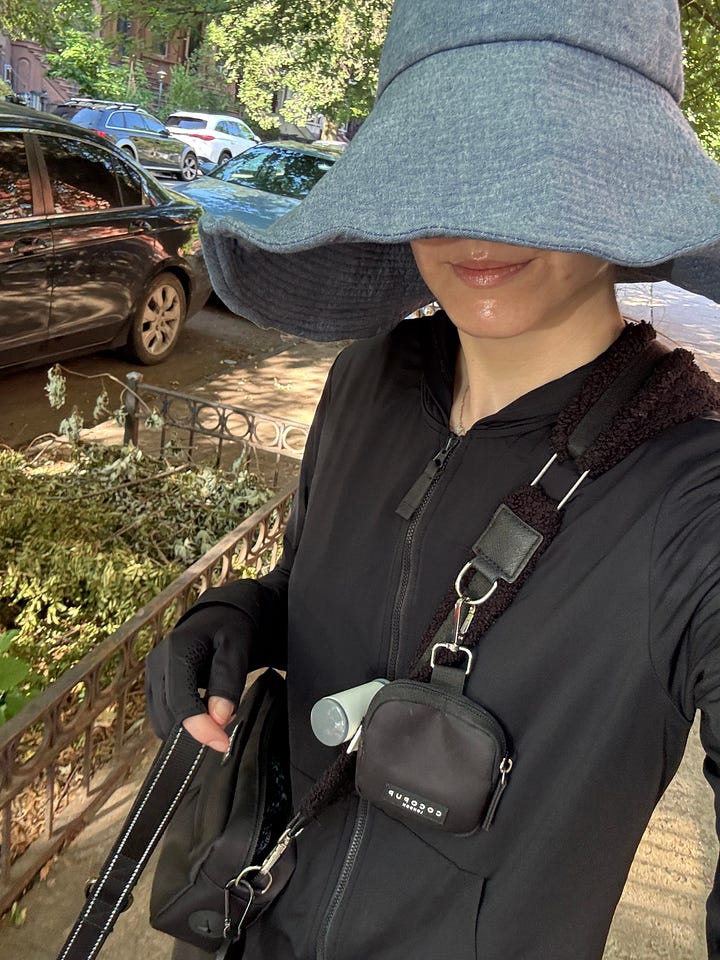
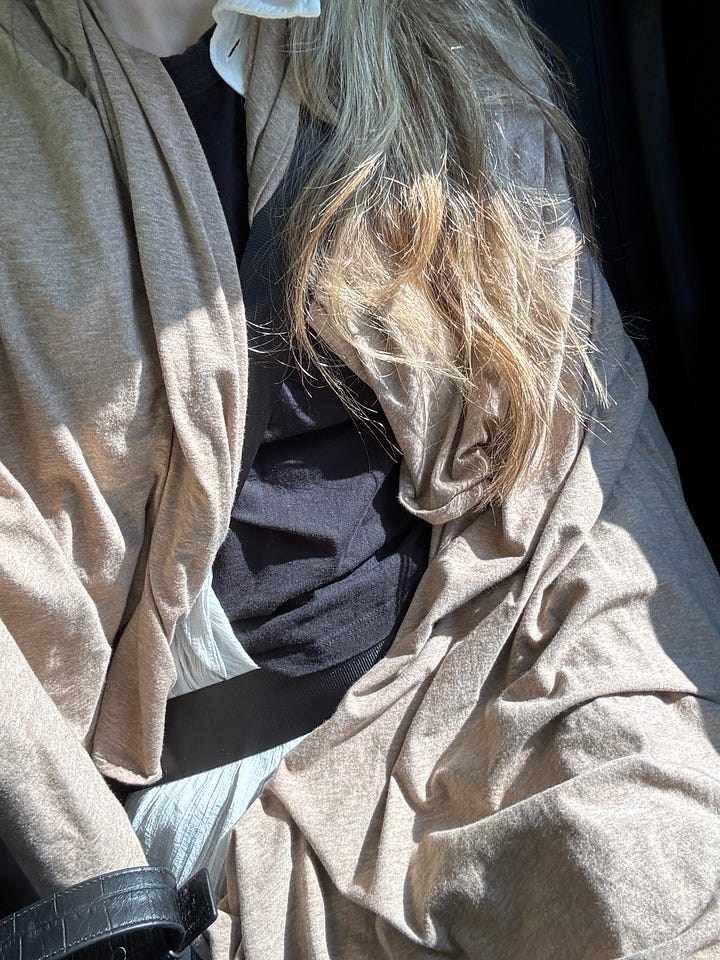
Slip, Slop, Slap, Seek, Slide
This handy mnemonic (along with its mascot, Sid the Seagull) originated in Australia & New Zealand in the 1980s. The best way to protect yourself from the sun is using multiple methods of protection.
With that, the handbook is complete! Thank you so much for reading. I’ll see you all on Sunday for recommendations galore.
xx,
Jolie
Today’s post is part of Hotline Skin’s Summer Skin School! Get caught up with the rest of class! Learn what bananas and the sun have in common, discover a new summer skincare savior, learn a bit of physics, understand why the US has worse sunscreen or amp up your mosquito defenses.
This series, like almost all of my content, is free! To support my work, consider becoming a paid subscriber. You’ll get access to weekly Office Hours, monthly giveaways and other perks. Not ready to subscribe but want to show appreciation for this post? Buy Me A Coffee!





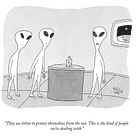
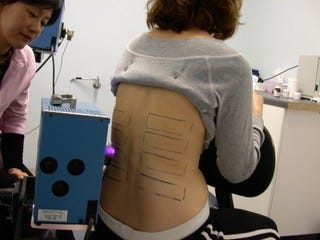
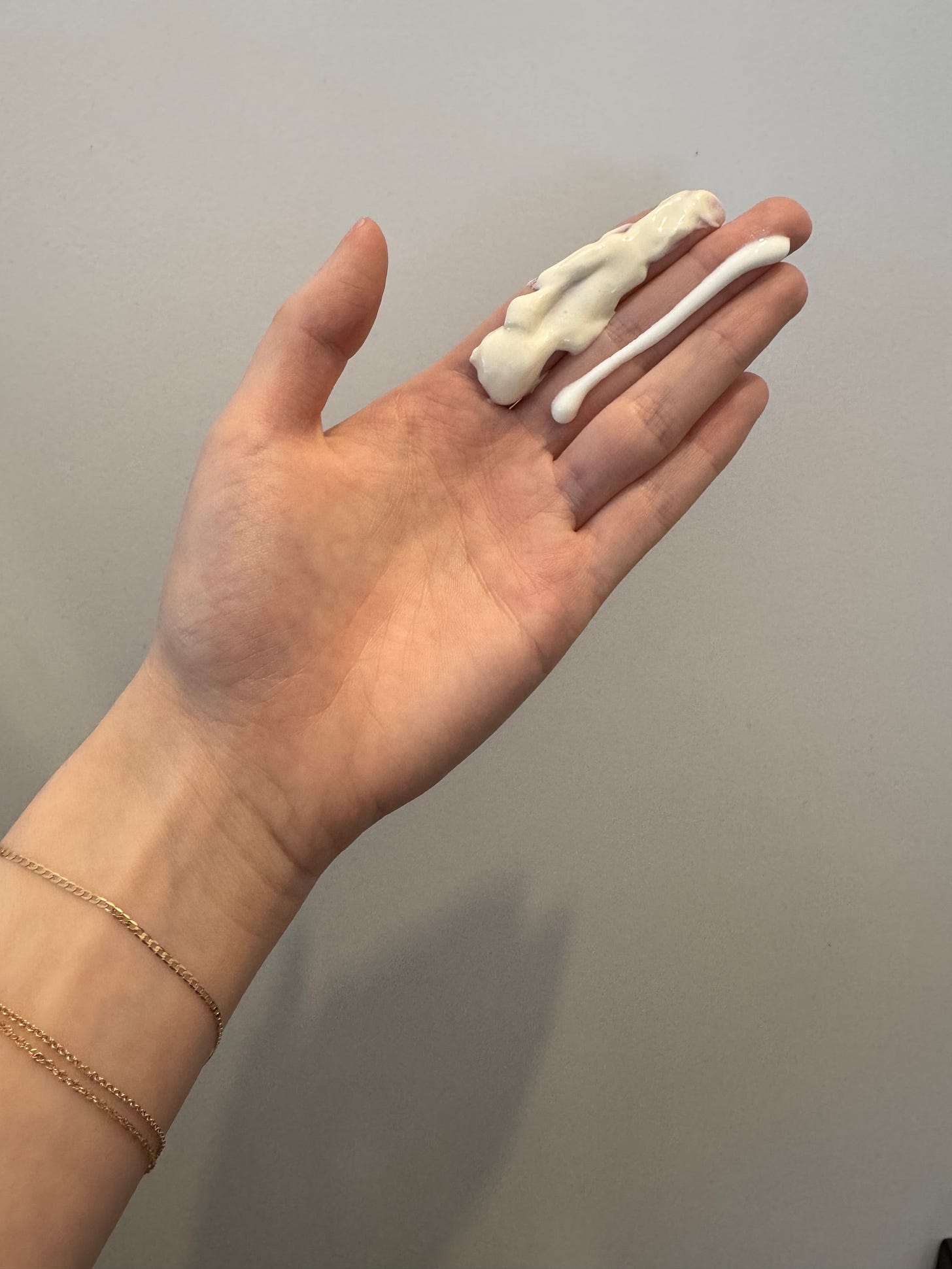



The “always apply” rule of sunscreen has been the biggest shift for me. Loved this series! Thanks Jolie!
Just sent the tanning mitt tip to all my mom friends